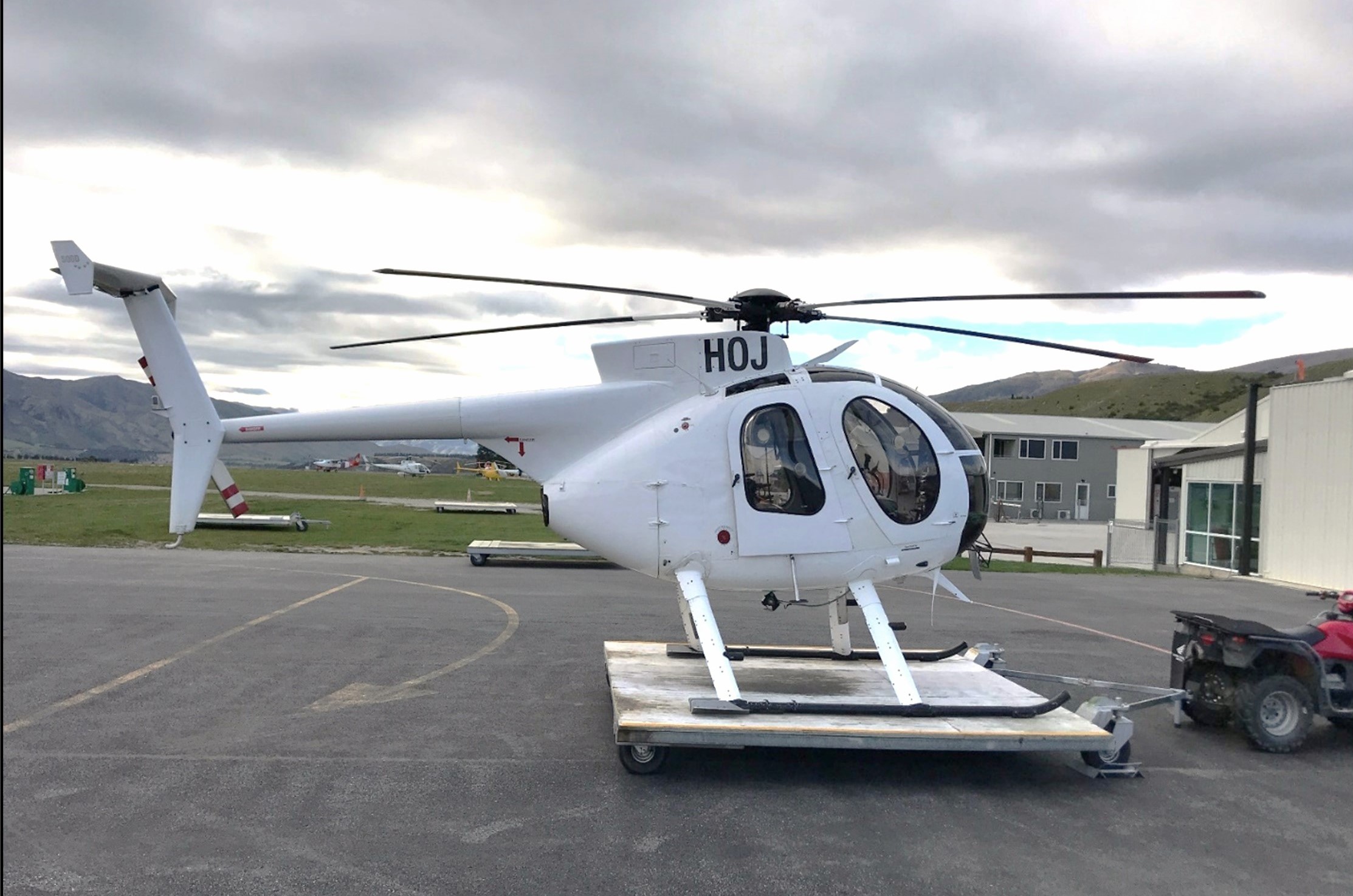
When a door of an aircraft opens in flight, it is abnormal and dangerous and should be reported, says the Transport Accident Investigation Commission (TAIC).
The Commission makes the call in its final report, published today, on the safety issues identified in its inquiry into the crash of a MD500D helicopter near Wānaka in October 2018.
The accident sequence started about a minute after take-off. The helicopter’s left-rear door very likely opened in flight and unsecured clothing flew out of the rear cabin. TAIC found that the clothing quickly became entangled in the tail rotor, causing a tail rotor blade to break off. The tail rotor assembly then became severely imbalanced, detached and struck the main rotor disc, breaking two adjacent main rotor blades, and putting the main rotor assembly out of balance. Another main rotor blade then struck the tail boom and the tail section separated. The helicopter became uncontrollable and was destroyed when it hit the ground and caught fire. This whole sequence happened in the space of about 14 seconds. All three occupants — the pilot and two conservation workers – lost their lives.
Deputy Chief Commissioner Stephen Davies Howard says TAIC could establish from the evidence what happened, but not exactly why. It is very likely the door opened because its latch was worn and outside the manufacturer's tolerances. The opening might have been prevented if the manufacturer's maintenance manual had clearer instructions and these had been followed during routine maintenance. Manufacturer MD Helicopters has responded positively to TAIC's finding and revised their manual and guidance.
"Door openings during flight should be regarded as abnormal and dangerous. However, investigators found that the risk associated with doors opening in flight had become normalised to too many New Zealand pilots and operators.
"This normalisation has led to door opening in flight being seen as not especially hazardous and therefore not worth reporting to the Civil Aviation Authority. If an unusual or hazardous event occurs in the air and it's not reported, maintenance engineers and operators won’t be aware there's a problem to rectify.
"Everyone should have a shared understanding of the risk and take responsibility to address it"
TAIC's Final Report recommends that the Director of Civil Aviation revise the rule, notes and guidance provided for CAR Part 12: Accidents, Incidents, and Statistics that a door opening in flight is a safety issue and to take steps to address door-opening-in-flight occurrences that are not being promptly reported to the CAA.. This augments TAIC's Interim Report recommendation (in December 2018) for education work by the CAA to remind aviation participants of the hazards of door-openings and to report all incidents.
"The risk of a door opening in flight is greater if unsecured cargo is in the cabin. Loose items can fly out and hit control surfaces, causing loss of control of the aircraft. Restraining the cargo in this instance could have prevented the subsequent chain of events and the loss of life."
This helicopter's operator now requires pilots to secure items in external cargo pods or under seats in purpose-made bags.
The lessons drawn from this tragic accident are that pilots must promptly report any unusual events when airborne, and operators need to enforce stringent cargo securing practices; aircraft manufacturers should provide clear instructions for maintenance, and regulators should ensure regulations are clear to all concerned.
